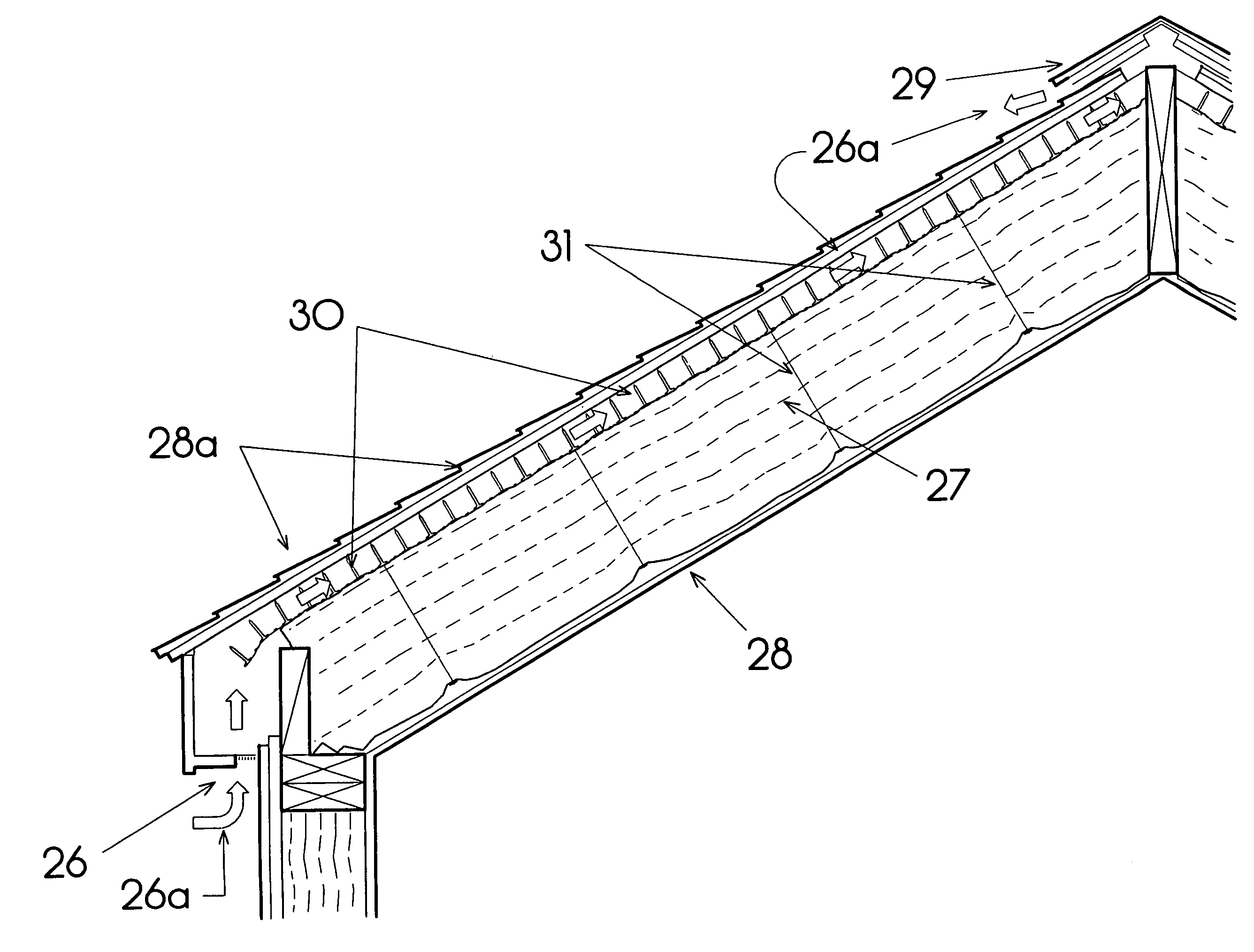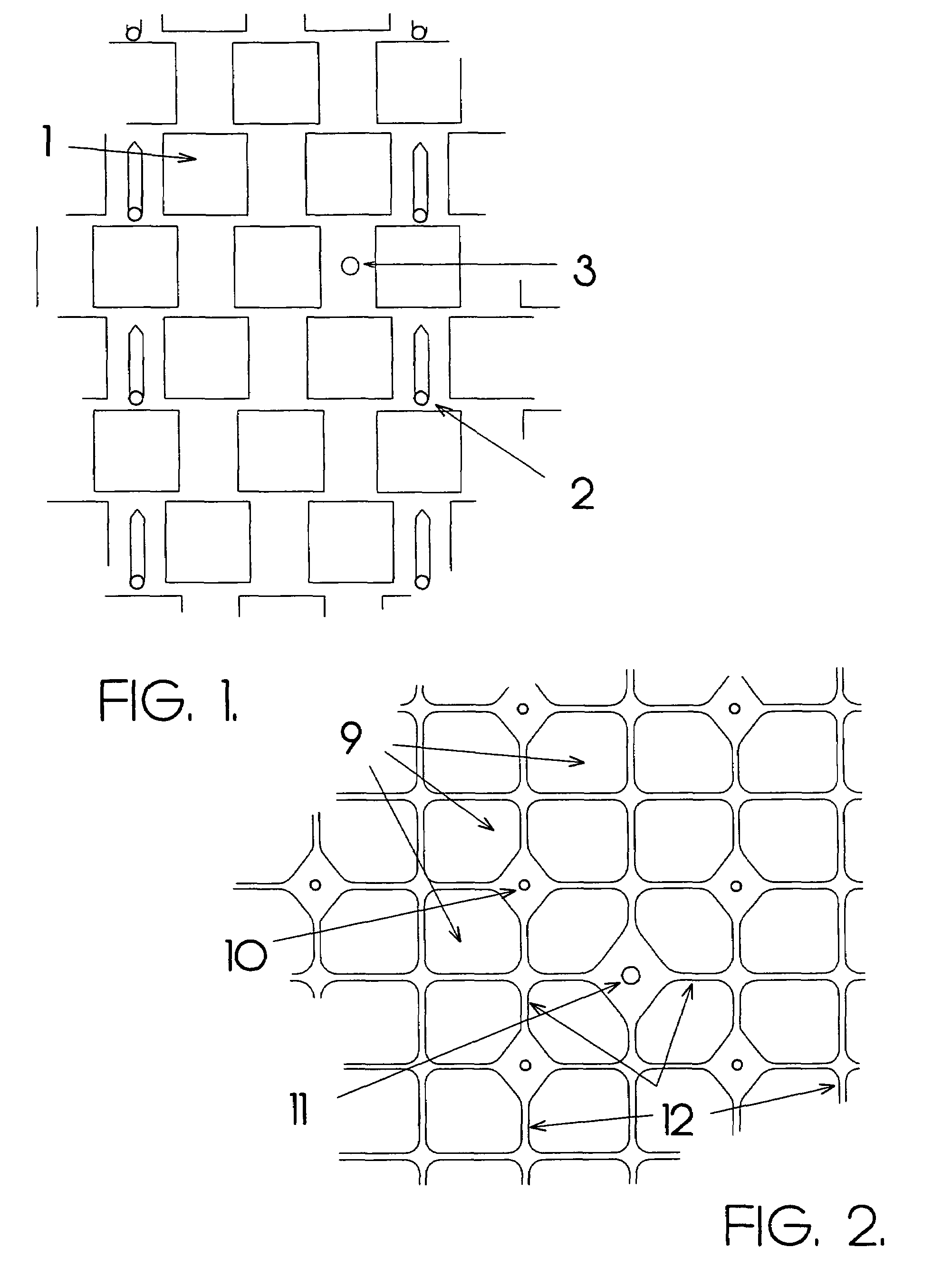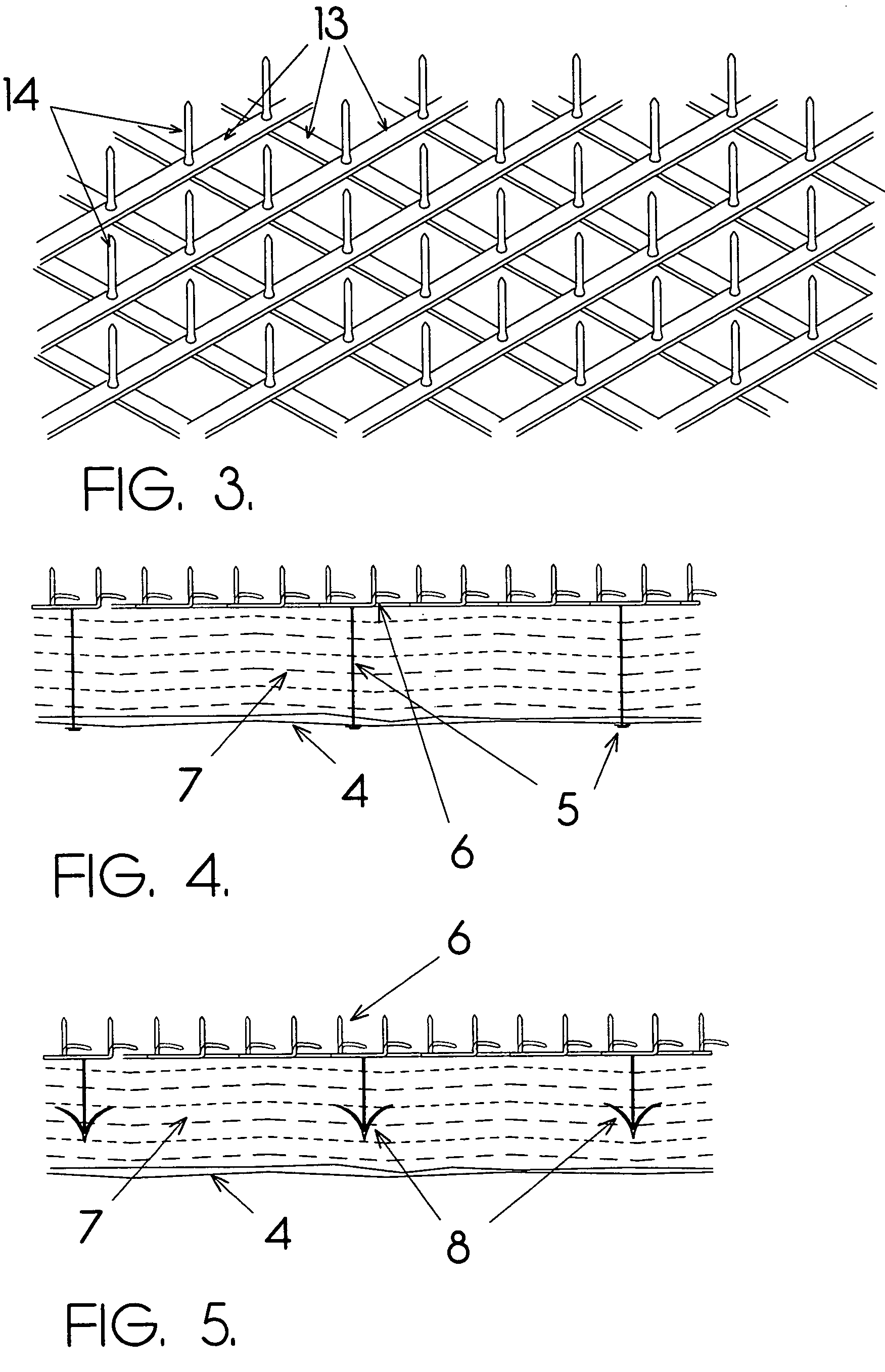Device and method to provide air circulation space proximate to insulation material
a technology of air circulation space and thermal insulation material, which is applied in the direction of walls, artificial islands, building roofs, etc., can solve the problems of increasing the thickness of other types of insulation, affecting the quality of thermal insulation, so as to achieve the effect of minimizing the profile of stacking or rolling
- Summary
- Abstract
- Description
- Claims
- Application Information
AI Technical Summary
Problems solved by technology
Method used
Image
Examples
Embodiment Construction
[0051]Reference will now be made in detail to the present preferred embodiments of the invention, examples of which are illustrated in the accompanying drawings. The methods and corresponding steps of the invention will be described in conjunction with the detailed description of the preferred embodiments of the invention.
[0052]The methods and devices presented herein may be used for maintaining a ventilation space proximate to insulation material such as thermal insulation. The present invention is particularly suited for maintaining a ventilation space proximate to fibrous thermal insulation, but may be applied to other types of insulation material.
[0053]Spaces made in accordance with this invention are a significant improvement over existing technology. Such devices are suitable for use in roofs and ceilings where ventilation must be maintained in order to expel heat and moisture from thermal insulation. In fact, the device is suitable for any application involving building surfa...
PUM
 Login to View More
Login to View More Abstract
Description
Claims
Application Information
 Login to View More
Login to View More - R&D
- Intellectual Property
- Life Sciences
- Materials
- Tech Scout
- Unparalleled Data Quality
- Higher Quality Content
- 60% Fewer Hallucinations
Browse by: Latest US Patents, China's latest patents, Technical Efficacy Thesaurus, Application Domain, Technology Topic, Popular Technical Reports.
© 2025 PatSnap. All rights reserved.Legal|Privacy policy|Modern Slavery Act Transparency Statement|Sitemap|About US| Contact US: help@patsnap.com



